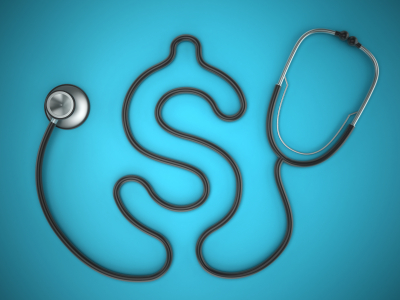 GUEST EDITORIAL
GUEST EDITORIAL
By Benjamin Domenech, The Heartland Institute
At long last, in 2016 we will learn which is more: $4,316 or $2,085.
That first number, $4,316, is the average employee cost for buying an employer-sponsored family health care plan in 2012, up from $2,137 a decade ago. The second number is the cost of the individual mandate tax for a family of four.
For a family of four earning $24,000, and for their employers, the decision process will probably go like this: get out the calculator, add up how much it costs to buy insurance, add up what it costs not to buy insurance … and make a quick decision. And for millions of Americans, the decision is expected to be: Don’t buy insurance until you’re headed to the hospital. The Associated Press reports:
Nearly 6 million Americans – significantly more than first estimated – will face a tax penalty under President Barack Obama’s health overhaul for not getting insurance, congressional analysts said Wednesday. Most would be in the middle class.
The new estimate amounts to an inconvenient fact for the administration, a reminder of what critics see as broken promises.
The numbers from the nonpartisan Congressional Budget Office are 50 percent higher than a previous projection by the same office in 2010, shortly after the law passed. The earlier estimate found 4 million people would be affected in 2016, when the penalty is fully in effect.
That’s still only a sliver of the population, given that more than 150 million people currently are covered by employer plans. Nonetheless, in his first campaign for the White House, Obama pledged not to raise taxes on individuals making less than $200,000 a year and couples making less than $250,000.
And the budget office analysis found that nearly 80 percent of those who’ll face the penalty would be making up to or less than five times the federal poverty level. Currently that would work out to $55,850 or less for an individual and $115,250 or less for a family of four. Average penalty: about $1,200 in 2016.
The CBO report is here. But if anything, it seems far too optimistic about the number of people who will abide by the mandate – or dare to claim they’re abiding by it, despite reality:
Among the uninsured individuals subject to the penalty tax, many are expected to voluntarily report on their tax returns that they are uninsured and pay the amount owed. However, other individuals will try to avoid payments. Therefore, the estimates presented here account for likely compliance rates, as well as the ability of the Internal Revenue Service … to administer and collect the penalty.
What’s more, the mandate tax over time is going to have to be increased if it is going to be at all effective. As Avik Roy notes:
Because Obamacare does so many other things to drive up the cost of insurance, these forecasts are likely to increase over time. More and more people – especially young, healthy people – will choose to pay the $695 fine instead of spending 10 times that on health insurance. As they do, the individual mandate will fail in its central purpose: forcing all Americans into the insurance system, so that premiums don’t increase for the chumps who pay for insurance year-round.
And it’s quite possible that the CBO’s numbers are too optimistic. We know that CBO’s insurance models borrow heavily from the work of Jonathan Gruber, the MIT economist who in 2010 declared “for sure” that Obamacare would reduce insurance premiums, only to reverse his position after the law was passed.
For millions of Americans whose employers don’t drop insurance entirely, this tax is unlikely to be anything more than a nuisance. The real cost they’re going to see is in higher insurance premiums, which will provide a powerful disincentive for new businesses to cover insurance in the first place.












